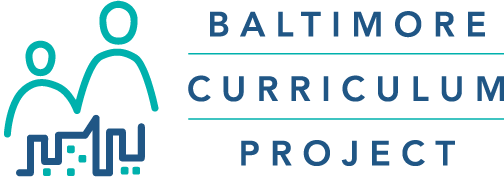At Baltimore Curriculum Project (BCP), we believe that schools are more than places to learn—they are community anchors. This has been foundational for BCP for three decades.
Since 1996, we have focused on offering the best instructional method we knew – Direct Instruction. When BCP became a charter school operator, we focused intentionally on converting some of Baltimore’s most challenging public schools into neighborhood conversion charter schools. This ensures that all children in the neighborhood could attend, without a lottery, and receive a free education steeped in rigor, challenge, and wrap-around support.
BCP schools, Wolfe Street Academy and Govans Elementary School, exemplify what happens when schools adopt a Community School model: students thrive, families are empowered, and neighborhoods grow stronger together.
The concept of community schools in the United States dates back to the early 20th century and gained formal traction in the 1930s and 1940s. It’s an educational approach that integrates academics with needed wraparound services—healthcare and social services, afterschool programs, and family support—particulary in high-poverty areas to close opportunity gaps and improve academic and life outcomes.
Community schools saw a nationwide renewal in the 1990s and 2000s as a response to rising inequality and under-resourced public schools.
Wolfe Street Academy
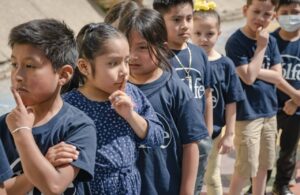 Tucked in Southeast Baltimore, Wolfe Street Academy (WSA) is a small school with a big reputation. Known for its deep ties to its mostly Latino immigrant community, Wolfe Street adopted the community school model in 2006, making it one of Baltimore’s and Maryland’s earliest pioneers in this work.
Tucked in Southeast Baltimore, Wolfe Street Academy (WSA) is a small school with a big reputation. Known for its deep ties to its mostly Latino immigrant community, Wolfe Street adopted the community school model in 2006, making it one of Baltimore’s and Maryland’s earliest pioneers in this work.
Since then, the school has become a nationally recognized model for how a school can support the whole child and whole family as a central, neighborhood hub for resources and support within the community.
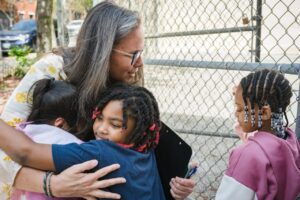 WSA’s dedication to educational excellence – the school consistently ranks among the top-performing Baltimore City public elementary schools in state testing – and holistic community support has been instrumental to community development in the Upper Fells Point neighborhood.
WSA’s dedication to educational excellence – the school consistently ranks among the top-performing Baltimore City public elementary schools in state testing – and holistic community support has been instrumental to community development in the Upper Fells Point neighborhood.
Read more about Wolfe Street’s role in community development and support.
Mark Gaither, WSA Principal since it became a community school, views the community school strategy as essential to creating a healthy school community. 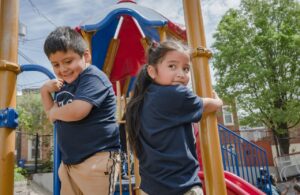 “The connections that we build between each other as a community school and [the neighborhoods we serve] allow us to identify the resources and strengths of our community and its partners to address the needs and weaknesses of that same community and those same partners.”
“The connections that we build between each other as a community school and [the neighborhoods we serve] allow us to identify the resources and strengths of our community and its partners to address the needs and weaknesses of that same community and those same partners.”
Since the pandemic, the number of community schools in Maryland has increased significantly. Today, there are 621 community schools as part of a statewide initiative to leverage community resources and support students and families, particularly those in areas with high poverty concentrations.
This is particularly the case at Wolfe Street, where 96% of its Pre-K through 5th grade students come from low-income households. A substantial portion are English language learners, reflecting the diverse linguistic backgrounds of the Upper Fells Point community. Notably, over 80% of students speak a language other than English at home.
The world is not becoming an easier place to live in for most of the population. We need each other more now than ever. In the realm of schools and school communities, the community school strategy is the answer. The relationships that the community school strategy creates, nurtures, and is composed of are the pathway to solutions for our families, staff, and community.
Read how WSA and its main community partner, Elev8 Baltimore, collaborate to serve its school and neighborhood communities.
Govans Elementary School
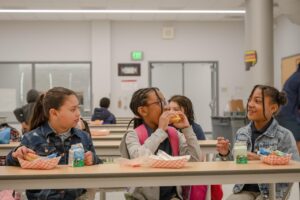 In the heart of North Baltimore, Govans Elementary School (GES) is proving how the community school model can revitalize a historic neighborhood. Govans Elementary has served the predominantly Black Govans neighborhood since 1931. Since becoming a BCP charter in 2015, GES has combined rigorous academics with full-family support, and the transformation is underway.
In the heart of North Baltimore, Govans Elementary School (GES) is proving how the community school model can revitalize a historic neighborhood. Govans Elementary has served the predominantly Black Govans neighborhood since 1931. Since becoming a BCP charter in 2015, GES has combined rigorous academics with full-family support, and the transformation is underway.
Supported by the 21st Century School Buildings Program, a significant public works initiative in Baltimore, GES received a new, modern school building in 2021, constructed on the site of the historic building.
Like Wolfe Street, the school has strong community connections. With its lead agency, Baltimore City Public Schools, Govans also works closely with York Road Partnership and local churches and universities in the neighborhood. The Church of the Redeemer on Charles Street partners with GES for student resources and classroom engagement, while nearby Loyola University Maryland and Towson University share their student intern with GES’s classrooms and programs.
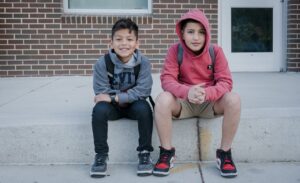 To deepen GES’s impact as a community school and to leverage the school’s improvements for broader community benefits, the Baltimore City Planning Department developed the Govans Elementary School INSPIRE Plan. INSPIRE, which stands for Investing in Neighborhoods and Schools to Promote Improvement, Revitalization, and Excellence, serves as a strategic guide for public and private investments within the area surrounding the school to enhance the neighborhood surrounding GES.
To deepen GES’s impact as a community school and to leverage the school’s improvements for broader community benefits, the Baltimore City Planning Department developed the Govans Elementary School INSPIRE Plan. INSPIRE, which stands for Investing in Neighborhoods and Schools to Promote Improvement, Revitalization, and Excellence, serves as a strategic guide for public and private investments within the area surrounding the school to enhance the neighborhood surrounding GES.
“Govans Elementary is more than a building—it’s the heart of our neighborhood,” Bernarda Kwaw, Principal, says. “We have created a place where children feel safe to dream, families feel welcome to connect, and the community comes together to celebrate learning. Our presence has brightened the appearance of the neighborhood, from our steel structured art work created by our students, to our well-kept grounds and vibrant student artwork that brings color and pride to our streets. Local businesses feel the impact too—families stopping in before and after school, partnerships forming for events, and a shared sense that when our school thrives, the whole area prospers.”
